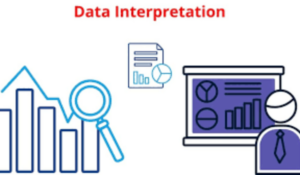Dear Aspirants,
Reasoning Ability is an onerous section. With the increasing complexity of questions, it becomes hard for one to give it the cold shoulder. The only way to make the grade in this particular section in the forthcoming banking exams like IBPS Clerk Mains is to practice continuously with all your heart and soul. And, to let you practice with the best of the latest pattern questions, here is the Adda247 Reasoning Quiz based on the exact same pattern of questions that are being asked in the exams.
Directions (1-5): Read the following information carefully and answer the given questions carefully.
Ten persons i.e. M, P, F, Z, Y, B, D, H, X and G are sitting on two parallel rows in which H, D, F, G and B are seated in first row and facing towards South and M, X, Y, Z and P are seated in 2nd row , facing towards North. They belong to different cities i.e. Pune, Kolkata, Mumbai, Delhi, Lucknow, Darbhanga, Patna, Chennai, Goa and Kanpur but not necessary in same order.
The one who belongs to Kanpur faces the one who sits immediate left Z. There are one person sits between Z and M. Y sits 2nd right of P, whose immediate left neighbor faces H. G sits 3rd left of H who belongs to Darbhanga. X faces the one who belongs to Lucknow. F sits 2nd left of the one who belongs to Mumbai. The one who belongs to Pune faces the one who sits immediate right of the one who belongs to Kanpur. There are two persons sit between the one who belongs to Lucknow and the one who belongs to Kanpur. Y sits immediate left of X, who belongs to Patna. The one who belongs to Goa faces D. G does not belong to Chennai. The one who belongs to Delhi sits left of the one who belongs to Goa.
Q1. Who among the following faces the one who sits immediate left of B?
M
Z
X
Y
P
Q2. Who among the following pairs sits at extreme right end?
X, D
Z, B
H, X
M, H
D, Z
Q3. How many persons sit between P and the one who faces the one who belongs to Kolkata?
One
Two
Three
Four
None of these
Q4. Who belongs to Chennai?
M
P
B
D
Y
Q5. If M is related to the one who belongs to Goa and F is related to the one who belongs to Mumbai, then D is related to?
the one who belongs to Darbhanga
the one who belongs to Pune
the one who belongs to Patna
the one who belongs to Mumbai
the one who belongs to Delhi
Directions (6-10): Study the following information carefully and answer the given questions.
When a word and number arrangement machine is given an input line of words and numbers, it arranges them following a particular rule. The following is an illustration of Input and rearrangement.
Input : 29 quora 48 diagnose 45 maths 38
Step 1: Quora 48 diagnose 45 maths 38 29
Step 2: Quora diagnose 48 45 maths 29 38
Step 3: Quora diagnose maths 45 29 38 48
Step 4: Quora diagnose maths 29 38 48 45
And step 4 is the last step of the above input. As per the rules followed in the above step, find out the appropriate step for the given output.
INPUT: According 79 summer 38 juncture 19 omi 26
Q6. Which element is exactly between the fourth from left end and third from right end in step IV?
79
26
38
19
None of these
Solution:
Students let us understand the Logic behind this Question and let’s understand how to solve it. When we see each step, then we can find that
The machine rearranges one word and one number in each step simultaneously, words are arranged from left end and numbers are arranged from right end.
(i) In this, words are arranged in decreasing manner according to addition of place values of all the vowels present in the word. (For example: juncture= 21+21+5= 47).
(ii) Numbers are arranged in decreasing order, according to difference of their digits. (For example: 38 = 8-3=5).
INPUT: According 79 summer 38 juncture 19 omi 26
Step 1: Juncture according 79 summer 38 omi 26 19
Step 2: Juncture summer according 79 omi 26 19 38
Step 3: Juncture summer according omi 79 19 38 26
Step 4: Juncture summer according omi 19 38 26 79
Q7. Which step number would be the following output?
“Juncture summer according omi 79 19 38 26”
Step III
Step IV
Step I
Step II
None of the Above
Solution:
Students let us understand the Logic behind this Question and let’s understand how to solve it. When we see each step, then we can find that
The machine rearranges one word and one number in each step simultaneously, words are arranged from left end and numbers are arranged from right end.
(i) In this, words are arranged in decreasing manner according to addition of place values of all the vowels present in the word. (For example: juncture= 21+21+5= 47).
(ii) Numbers are arranged in decreasing order, according to difference of their digits. (For example: 38 = 8-3=5).
INPUT: According 79 summer 38 juncture 19 omi 26
Step 1: Juncture according 79 summer 38 omi 26 19
Step 2: Juncture summer according 79 omi 26 19 38
Step 3: Juncture summer according omi 79 19 38 26
Step 4: Juncture summer according omi 19 38 26 79
Q8. What is the position of ‘omi’ in the step 3?
Seventh from the right
Sixth from the left
Fourth from the right
Fourth from the left
None of these
Solution:
Students let us understand the Logic behind this Question and let’s understand how to solve it. When we see each step, then we can find that
The machine rearranges one word and one number in each step simultaneously, words are arranged from left end and numbers are arranged from right end.
(i) In this, words are arranged in decreasing manner according to addition of place values of all the vowels present in the word. (For example: juncture= 21+21+5= 47).
(ii) Numbers are arranged in decreasing order, according to difference of their digits. (For example: 38 = 8-3=5).
INPUT: According 79 summer 38 juncture 19 omi 26
Step 1: Juncture according 79 summer 38 omi 26 19
Step 2: Juncture summer according 79 omi 26 19 38
Step 3: Juncture summer according omi 79 19 38 26
Step 4: Juncture summer according omi 19 38 26 79
Q9. In step II, what is the sum of 7th element and 8th element from left end?
56
45
57
54
None of these
Solution:
Students let us understand the Logic behind this Question and let’s understand how to solve it. When we see each step, then we can find that
The machine rearranges one word and one number in each step simultaneously, words are arranged from left end and numbers are arranged from right end.
(i) In this, words are arranged in decreasing manner according to addition of place values of all the vowels present in the word. (For example: juncture= 21+21+5= 47).
(ii) Numbers are arranged in decreasing order, according to difference of their digits. (For example: 38 = 8-3=5).
INPUT: According 79 summer 38 juncture 19 omi 26
Step 1: Juncture according 79 summer 38 omi 26 19
Step 2: Juncture summer according 79 omi 26 19 38
Step 3: Juncture summer according omi 79 19 38 26
Step 4: Juncture summer according omi 19 38 26 79
Q10. Which of the following element would be at the third position from the left end in step III?
juncture
79
according
26
None of these
Solution:
Students let us understand the Logic behind this Question and let’s understand how to solve it. When we see each step, then we can find that
The machine rearranges one word and one number in each step simultaneously, words are arranged from left end and numbers are arranged from right end.
(i) In this, words are arranged in decreasing manner according to addition of place values of all the vowels present in the word. (For example: juncture= 21+21+5= 47).
(ii) Numbers are arranged in decreasing order, according to difference of their digits. (For example: 38 = 8-3=5).
INPUT: According 79 summer 38 juncture 19 omi 26
Step 1: Juncture according 79 summer 38 omi 26 19
Step 2: Juncture summer according 79 omi 26 19 38
Step 3: Juncture summer according omi 79 19 38 26
Step 4: Juncture summer according omi 19 38 26 79
Directions (11-15): In each of the question below is given some statements followed by some conclusions. You have to take the given statements to be true even if they seem to be at variance from commonly known facts. Read all the conclusions and then decide which of the given conclusions logically does not follow from the given statements disregarding commonly known facts.
Q11. Statements:
Some pencils are pens.
Some pens are desks.
Some desks are racks.
Conclusions:
I. Some racks are not pens.
II. Some desks being pencils is a possibility.
III. All racks can be desks.
Only I
Only II
All follows except III
None follows
All follows
Q12. Statements:
No flat is house.
No house is building.
Some buildings are huts.
Conclusions:
I. Some flats are not houses.
II. At least some huts are houses.
III. All huts being buildings is possibility.
Only III
Only I
Only II
I and III
All follow
Q13. Statements:
Some skirts are pants.
No tie is a pant.
Some ties are shoes.
Conclusions:
I. At least some shoes are not pants.
II. Some ties are not skirts.
III. Some ties are pants.
IV. Some pants are not tie.
Only II
Only III and II
I and II
All of these
None of these
Q14. Statements:
All marker are pens.
All pens are stands
No stand is notebook
Some notebook are books.
Conclusions:
I. No marker is notebook
II. All pens are not notebook
III. All books being Pens is a possibility.
IV. Some pens are books.
Only I and II
Only III
Only III and IV
Only II and III
None of these
Q15. Statements:
All mobiles are machines.
All machines are printers.
Some printers are keys.
No key is board.
Conclusion:
I. All keys being machines is a possibility
II. Some boards being printer is a possibility.
III. All printers are machines.
IV. At least some boards are mobiles.
None follows
Only I and II
Only II
Only III or IV
None of the above





 SBI Clerk 2026 Notification, Exam Date, ...
SBI Clerk 2026 Notification, Exam Date, ...
 Data Interpretation (Line/Bar Graph) for...
Data Interpretation (Line/Bar Graph) for...
 Daily Current Affairs Quiz 2025 15 Decem...
Daily Current Affairs Quiz 2025 15 Decem...








